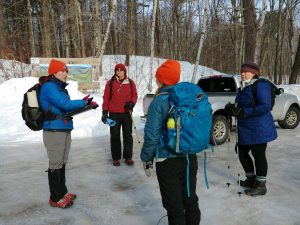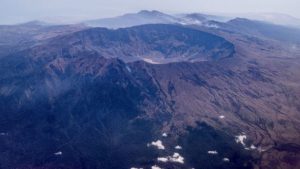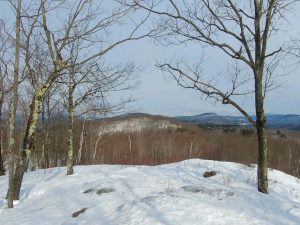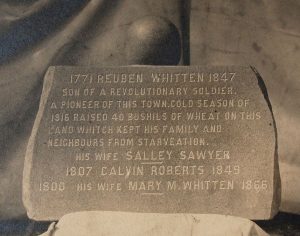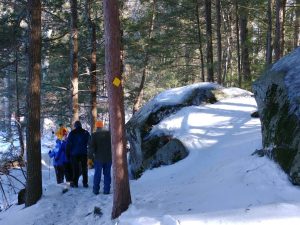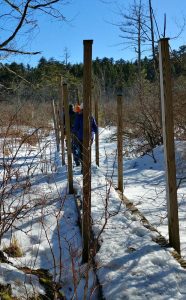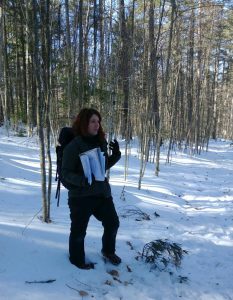What could be better than spending time writing poetry with my daughter on a Saturday morning? I attended the “Mindful Journaling” workshop led by Amanda Carron- an impressive Americorps volunteer with Squam Lakes Association. Amanda has a Master’s degree in Natural Resources with a certificate in Environmental Education from the University of Idaho and she offered a great collection of writing prompts. Lucky Sydney who gets to work with her and served as her assistant. I was sorry the 2.5 hour session hiking around Whitten Woods had to end. I really enjoyed sketching and reading and sharing our writing.
New England Forestry Foundation owns the 400+ acre property and Squam Lakes Conservation Society holds conservation and trail easements.
Read more about Amanda, https://www.squamlakes.org/2018-2019-conservation-journal#.
One of the other participants had three daughters who attended Saint Lawrence University, Sydney's alma mater, so the two of them had lots of connections.
I teach about the culturally, historically significant Whitten woods site in my Plymouth State University classes and was happy for another chance to trek around in the winter. More than a hundred years ago, Reuben Whitten fed his neighbors with food he grew on his elevated, south facing property overlooking the Squam watershed, during the year without a summer. His success followed the 1815 eruption of Mount Tambora, on the island of Sumbawa in Indonesia; one of the most powerful volcanic eruptions in history with a Volcanic Explosivity Index (VEI) of 7.
Mount Tambora was 14,100 feet before the explosion and is now 9,254 feet high. The explosion was reportedly heard 1600 miles away and ash fell 810 miles from the site. The amount of ash put into the atmosphere lowered global temperatures and caused sunsets to be red and orange with purple and pink above as reported in England. Sunspots were visible in the dark, dimmed, daytime skies. The colorful skies were beautiful but the famine that followed was not.
The decrease in average global temperatures from all the ash emitted caused significant agricultural problems around the globe, in China, Europe, and North America. In June of 1816, frosts were reported and snow fell in northern New England. "Reuben Whitten and his wife shared 40 bushels of their wheat with 100 neighbors who were less fortunate, an act of generosity that was later recorded on a memorial stone by their grandson, in 1911," https://nhpreservation.org/…/2018-preservation-achievement-…. Their house has been moved to Ashland and is now on the state historic registry in recognition of Reuben's contributions almost 200 years ago. 1816 has been referred to as the year without a summer.
The cooling climate was blamed for typhus epidemics and disrupted the Chinese and Indian monsoons, causing failed harvests resulting in famine. In Ireland the wheat, oat, and potato harvests all failed. The documented rainfall was as much as 80 percent more than the calculated normal, with unusually high amounts of snow in Switzerland, France, Germany, and Poland. The most interesting cultural phenomena is the claim that some countries could no longer grow grapes and switched to hops to brew beer
Tambora currently has an active vent being monitored by the Directorate of Vulcanology and Geological Hazard Mitigation, Indonesia. I urge my environmental science and policy student to consider pursuing hazard mitigation as a career; we certainly don’t have any shortage of natural disasters, especially as the population continues to increase.
I visited Vesuvius, Etna, and Pompeii for my last sabbatical; maybe I can investigate Tambora next.
References:
Brönnimann S, Krämer D. 2016. Tambora and the “Year Without a Summer” of 1816. A Perspective on Earth and Human Systems Science. Geographica Bernensia G90, 48 pp., doi:10.4480/GB2016.G90.01; https://boris.unibe.ch/81880/7/tambora_e_web.pdf.
Gillen D’Arcy, 2014, The Volcano That Changed the Course of History:After the tsunami and famine came cholera, opium, and failed Arctic expeditions, https://slate.com/…/tambora-eruption-caused-the-year-withou….





